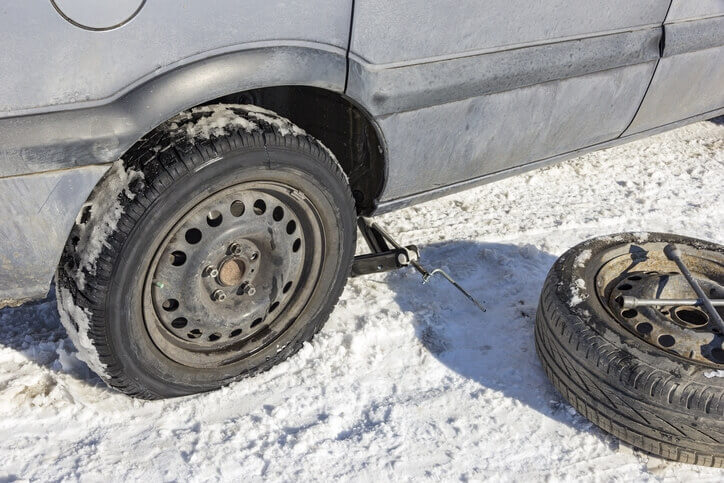How to change a flat tire

January 20, 2020. If the flat tire is on the driver’s side of the vehicle and you are on a highway or narrow street, you should call roadside assistance. The risk of being hit by another vehicle is high, especially after dark. Drive to an exit or shoulder if you can and call for help. If you are able to pull over to a safe place and the flat is not on the driver’s side, you can change it by following these steps:
- Turn on your hazard lights.
- Check your owner’s manual for specific instructions.
- Put the parking brake on.
- Put wheel wedges, rocks, or bricks behind or in front of the wheels. If the flat tire is in the front, put them at the back and vice versa.
- Remove the hubcap by using the flat end of a lug wrench. You may need a special tool for some vehicles.
- Use the lug wrench to loosen the lug nuts.
- Put the jack under the car along the frame next to the flat tire.
- Place a piece of would under it to prevent it from settling and tipping over under the weight of the vehicle.
- Raise the car with the jack until the tire is about 6 inches above the ground and do not put any part of your body under the car at any time.
- Unscrew the lug nuts that you have already loosened.
- Take the flat tire off.
- Put the spare tire back on the lug bolts.
- Put the lug nuts back on the lug bolts. Tighten them until they are finger tight.
- Lower the vehicle so the tire is touching the ground, but the full weight of the car is not on the tire and tighten the lug nuts all the way with the wrench.
- Lower the car all the way and try tightening the lug nuts again.
- Put the hubcap back.
- Check the pressure of the spare tire. T-Type temporary spares need to be inflated to 60 psi or 420kPa. If the pressure is too low, drive slowly to a gas station and inflate it.
Follow these steps to help you change a flat tire if the need ever arises.


.jpg?300x300)
